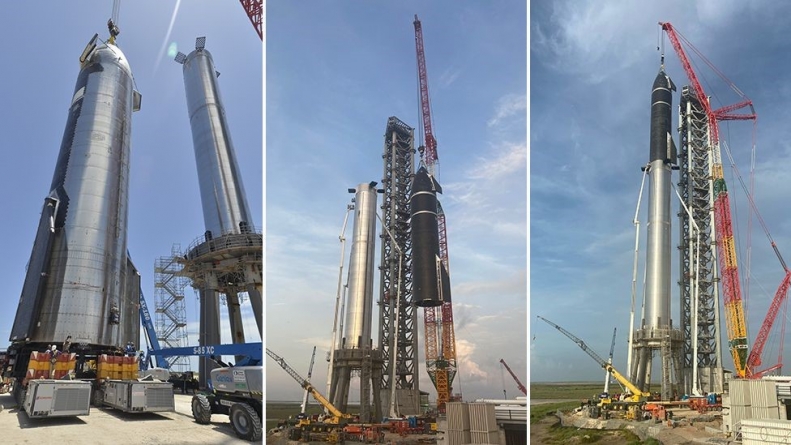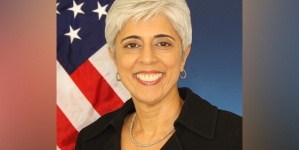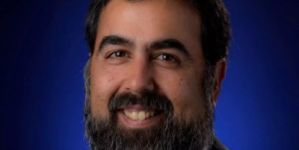-
LONDON: Indian-Origin Teen In UK Gets “Life-Changing” Cancer Treatment - April 25, 2024
-
SILICON VALLEY: All About Pavan Davuluri, New Head Of Microsoft Windows - April 25, 2024
-
LONDON: UK’s India Gate To Commemorate Role Of Indian Soldiers From World Wars - April 24, 2024
-
HARARE: Shri Bramha Kumar appointed as the next Ambassador of India to the Republic of Zimbabwe - April 23, 2024
-
LONDON: Indian-Origin Principal Wins UK Legal Challenge Over School Prayer Ban - April 23, 2024
-
TORONTO: Indian-Origin Doctor Needs ₹ 2 Crore For Legal Fees. Elon Musk Responds - April 22, 2024
-
KINSHASA: India-Democratic Republic of Congo Foreign Office Consultations - April 21, 2024
-
LONDON: UK Court Allows Sale Of Nirav Modi’s Luxury London Apartment - April 21, 2024
-
TEHRAN: Travel advisory for Iran and Israel - April 20, 2024
-
LUXEMBOURG: Shri Saurabh Kumar concurrently accredited as the next Ambassador of India to the Grand Duchy of Luxembourg - April 20, 2024
TEXAS: Biggest ever rocket is assembled briefly in Texas
TEXAS: The American SpaceX company has
stacked the biggest rocket ever constructed.
The
vehicle’s two segments – an upper-stage called Starship and a booster called
Super Heavy – were connected together at the firm’s Starbase R&D facility
in Boca Chica, Texas.
Standing
roughly 120m (400ft) in height, the SpaceX rocket dwarfs any previous launch
system.
When it
eventually lifts off, it will produce about twice the thrust of the vehicles
that sent men to the Moon.
The main
engines on Apollo’s famous Saturn V rockets delivered some 35 meganewtons
(nearly 8 million pounds of force) off the pad. The new SpaceX Super Heavy
booster should achieve around 70 meganewtons.
A massive
crane was needed to join the two segments together. They were held in position
for an hour before then being separated again.
SpaceX
still has weeks to months of testing ahead of it to prepare for the inaugural
flight.
This will
see the booster hurl the Starship into space for a once-around-the-Earth trip,
which will end with a disposal “landing” in waters off the Hawaiian
islands in the Pacific. The Super Heavy will be ditched in the Gulf of Mexico.
Ultimately,
though, SpaceX wants both segments of future vehicles to make controlled
touchdowns, on land or on sea platforms, so they can be re-used.
Company
CEO, Elon Musk, says the Starship system, once fully developed, will be more
than capable of taking humans to the Moon and Mars.
It could
also ferry people quickly around the globe. Putting satellites in orbit is
another obvious application.
The
American space agency, Nasa, has already contracted SpaceX to produce a version
of the Starship upper-stage that can land astronauts near the lunar south pole
this decade.
Friday’s
milestone follows months of breathtaking activity in Boca Chica.
Engineers
have built a succession of prototypes at Starbase. These have helped the design
team understand the best way to manufacture the huge stainless steel craft. And
by launching some of the Starship iterations on high-altitude hops, SpaceX
technicians have also gained invaluable flight experience.
The
segments mated briefly on Friday are codenamed B4 (the Super Heavy booster) and
Ship 20 (the Starship upper-stage). The pair won’t launch until they have a
licence from the Federal Aviation Administration (FAA).
The
government agency is currently conducting an environmental review that will
invite at some point a 30-day public consultation. So, the maiden orbital
outing is still some way off. But Mr Musk is very keen that it should happen
well before the end of the year.
He
described seeing the brief mating of the segments on Friday as a “dream
come true”.
The most
powerful rocket currently in operation is the Falcon Heavy, also built by
SpaceX. This produces 23 meganewtons of thrust at launch.























